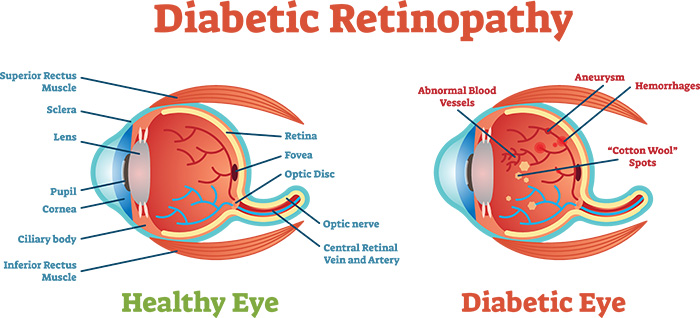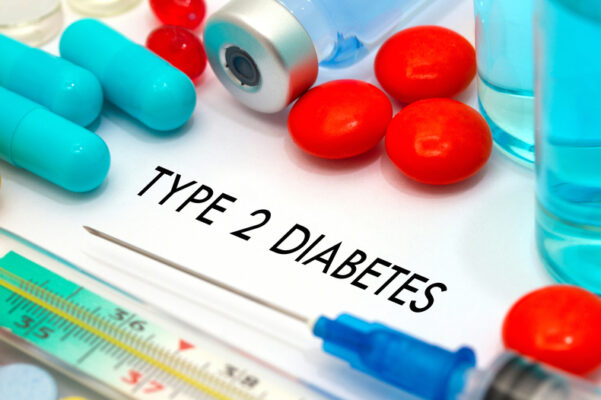Diabetes is now an epidemic, and as we continue to live longer, we will have more diabetes. As we age, our risk of developing diabetes is a six times greater than that of a person in their 20s. It is even higher in nursing homes, and hospice care facilities, and increases to 34%.
Diabetes is a serious disease caused when the blood glucose level, sometimes called blood sugar, is too high. The good news is that there are things you can do to take control of diabetes and prevent its problems. And, if you are worried about getting diabetes, there are things you can do to lower your risk.
What is Diabetes?
Our bodies turn the food we eat into glucose. Insulin helps glucose get into our cells, where it can be used to make energy. If you have diabetes, your body may not make enough insulin, may not use insulin in the right way, or both. That can cause too much glucose in the blood. Your GP may refer you to an endocrinologist.
Types of Diabetes
Type 1 Diabetes. In type 1 diabetes, the body makes little or no insulin. Although adults can develop this type of diabetes, it occurs most often in children and young adults.
Type 2 Diabetes. In type 2 diabetes, the body makes insulin but doesn’t use it the right way. It is the most common kind of diabetes. It occurs most often in middle-aged and older adults, but it can also affect children.
Your chance of getting type 2 Diabetes is higher if you are overweight, inactive, or have a family history of diabetes.
Diabetes can affect many parts of your body. It is important to keep diabetes under control. Over time, it can cause serious health problems like heart disease, stroke, kidney disease, blindness, nerve damage, and circulation problems especially in the lower legs that may lead to amputation. People with type 2 diabetes also have a greater risk for Alzheimers disease.
What Is Pre-diabetes?
Many people have “pre-diabetes.” This means their glucose levels are higher than normal but not high enough to be called diabetes. Pre-diabetes is a serious problem because people who have it are at high risk for developing type 2 diabetes.
There are things you can do to prevent or delay getting type 2 diabetes.
1. Lose weight
2. Healthy eating
3. Remain physically active
Check with your GP how often you should have your glucose levels checked.
Symptoms of Diabetes
Some people with type 2 diabetes may not know they have it. But, they may feel tired, hungry, or thirsty. They may lose weight without trying, urinate often, or have trouble with blurred vision. They may also get skin infections or heal slowly from cuts and bruises. Make an appointment with your GP if you have one or more of these symptoms.
Tests for Diabetes
Doctors use several blood tests to help diagnose diabetes:
- Random plasma glucose test—given at any time during the day
- A1C test—given at any time during the day; shows your glucose level for the past 3 months
- Fasting plasma glucose test—taken after you have gone without food for at least 8 hours
- Oral glucose tolerance test—taken after fasting overnight and then again 2 hours after having a sugary drink
Your doctor may want you to be tested for diabetes twice before making a diagnosis.
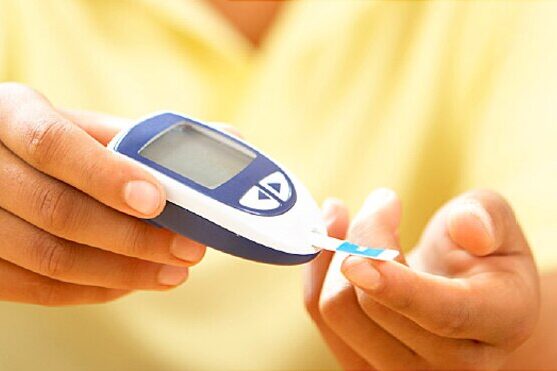
Managing Diabetes
Once you’ve been told you have diabetes, your doctor will choose the best treatment based on the type of diabetes you have, your everyday routine and any other health problems you have. Many people with type 2 diabetes can control their blood glucose levels with diet and exercise alone. Others need diabetes medicines or insulin injections. Over time, people with diabetes may need both lifestyle changes and medication.
You can keep control of your diabetes by:
- Tracking your glucose levels- Very high glucose levels or very low glucose levels (called hypoglycemia) can be risky to your health. Talk to your doctor about how to check your glucose levels at home.
- Making healthy food choices- Learn how different foods affect glucose levels.
- Getting exercise- Daily exercise can help improve glucose levels in older people with diabetes.
- Take your diabetes medicines regularly- Tell your GP if you have any side effects.
Here are some ways to stay healthy with diabetes:
- Find out your average blood glucose level- At least twice a year, get the A1C blood test. The result will show your average glucose level for the past 3 months.
- Watch your blood pressure- Get your blood pressure checked regularly or buy your own monitor.
- Check your cholesterol- At least once a year, get a blood test to check your cholesterol and triglyceride levels. High levels may increase your risk for heart problems.
- Stop smoking- Smoking raises your risk for many health problems, including heart attack and stroke.
- Have yearly eye exams- Diabetes may predispose you to eye problems.
- Check your kidneys yearly- Diabetes can affect your kidneys. A urine and blood test will show if your kidneys are okay.
- Care for your teeth and gums- Brush your teeth and floss daily. Have regular dental check ups.
- Protect your skin- Take care of all minor cuts and bruises to prevent infections.
- Look at your feet- Take time to look at your feet every day for any red patches. Ask someone else to check your feet if you can not. If you have sores, blisters, breaks in the skin, infections, or build-up of calluses, see a podiatrist/chirpodist. It is very important as a diabetic to take good care of your feet due to poor circulation.
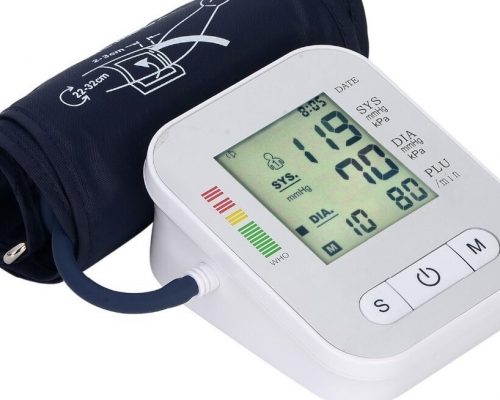
What is different in diagnosing diabetes in the elderly?
Sometimes the diagnosis of diabetes in the elderly can be a bit tricky. They may be displaying symptoms of confusion and urinary incontinence, dry mouth, or other vague signs, and not showing all of the usual symptoms of diabetes. They may become dehydrated and have electrolyte imbalances. This is due, in part, to how the kidneys metabolize blood sugar in the elderly.
Treatment of Diabetes in the Elderly
Treating diabetes amongst the elderly can present unique challenges. Other disabilities associated with aging can contribute to the complexity of strictly self-managing diabetes.Impaired physical functioning amongst some elderly patients can mean that adjusting to a diabetes care routine is more difficult.
Cognitive impairment can also provide an obstacle.
What are the risks of Diabetes in the Elderly
Elderly people are often more frail and susceptible to illness.
This can mean diabetes-related complications are more common and harder to manage.
Furthermore, exercise and adapting a diet can be more difficult for elderly people, and problems can arise in these areas.
All diabetes complications can occur amongst older patients. Cognitive complications are more common amongst the elderly.
Further problems may include undiagnosed depression, social issues, limited daily means and coexisting health problems.
Many elderly diabetic patients are pre-disposed to hypoglycaemia.
Managing diabetes amongst the elderly may often have different objectives to treating the condition in younger patients.
Some drugs may be less suitable for elderly patients, and treatment plans will almost certainly have to be adjusted.
Treating geriatrics with diabetes requires the caregiver to take a multidisciplinary role. The goals should always be the reduction of diabetes-related complications. Many older people with diabetes are under treated.
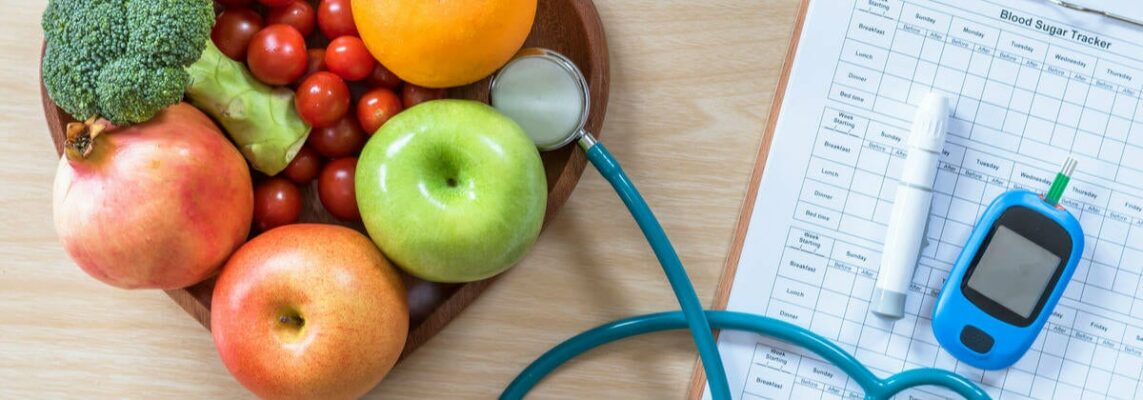
Blood sugar Levels
Understanding blood glucose level ranges can be a key part of diabetes self-management. The NICE recommended target blood glucose levels are stated below for adults with type 1 diabetes, type 2 diabetes and children with type 1 diabetes.
NICE recommended target blood glucose level ranges | |||
Target Levels | Upon waking | Before meals | At least 90 minutes after meals |
Non-diabetic* | 4.0 to 5.9 mmol/L | under 7.8 mmol/L | |
Type 2 diabetes | 4 to 7 mmol/L | under 8.5 mmol/L | |
Type 1 diabetes | 5 to 7 mmol/L | 4 to 7 mmol/L | 5 to 9 mmol/L |
Children w/ type 1 diabetes | 4 to 7 mmol/L | 4 to 7 mmol/L | 5 to 9 mmol/L |
*The non-diabetic figures are provided for information but are not part of NICE guidelines.
Normal and diabetic blood sugar ranges
For the majority of healthy individuals, normal blood sugar levels are as follows:
- Between 0 to 5.4 mmol/L (72 to 99 mg/dL) when fasting [361]
- Up to 8 mmol/L (140 mg/dL) 2 hours after eating
For people with diabetes, blood sugar level targets are as follows:
- Before meals: 4 to 7 mmol/L for people with type 1 or type 2 diabetes
- After meals: under 9 mmol/L for people with type 1 diabetes and under 8.5mmol/L for people with type 2 diabetes
Blood sugar levels in diagnosing diabetes
The following table lays out criteria for diagnoses of diabetes and prediabetes.
Blood sugar levels in diagnosing diabetes | |||
Plasma glucose test | Normal | Prediabetes | Diabetes |
Random | Below 11.1 mmol/l | N/A | 11.1 mmol/l or more |
Fasting | Below 5.5 mmol/l | 5.5 to 6.9 mmol/l | 7.0 mmol/l or more |
2 hour post-prandial | Below 7.8 mmol/l | 7.8 to 11.0 mmol/l | 11.1 mmol/l or more |
Random plasma glucose test
A blood sample for a random plasma glucose test can be taken at any time. This doesn’t require as much planning and is therefore used in the diagnosis of type 1 diabetes when time is of the essence.
Fasting plasma glucose test
A fasting plasma glucose test is taken after at least eight hours of fasting and is therefore usually taken in the morning.
The NICE guidelines regard a fasting plasma glucose result of 5.5 to 6.9 mmol/l as putting someone at higher risk of developing type 2 diabetes, particularly when accompanied by other risk factors for type 2 diabetes.
Oral Glucose Tolerance Test (OGTT)
An oral glucose tolerance test involves taking a first taking a fasting sample of blood and then taking a very sweet drink containing 75g of glucose.
After having this drink you need to stay at rest until a further blood sample is taken after 2 hours.
HbA1c test for diabetes diagnosis
An HbA1c test does not directly measure the level of blood glucose, however, the result of the test is influenced by how high or low your blood glucose levels have tended to be over a period of 2 to 3 months.
Indications of diabetes or pre-diabetes are given under the following conditions:
- Normal:Below 42 mmol/mol (6.0%)
- Prediabetes:42 to 47 mmol/mol (6.0 to 6.4%)
- Diabetes:48 mmol/mol (6.5% or over)
Why are good blood sugar levels important?
It is important that you control your blood glucose levels as well as you can as too high sugar levels for long periods of time increases the risk of diabetes complications developing.
Diabetes complications are health problems which include:
This list of problems may look scary but the main point to note is that the risk of these problems can be minimised through good blood glucose level control. Small improvements can make a big difference if you stay dedicated and maintain those improvements over most days.
Lowcarbprogram.com is a free App that you can down load to help with diet
Can advise you on diet and give you support
Elderly with diabetes are at a greater risk for diabetes complications
The older population with diabetes is at a greater risk of developing the complications of diabetes than their younger peers with diabetes. As an older aged person, even if you are good at self-managing your diabetes, you are still at an increased risk of developing hearing and vision problems, developing memory loss and other cognitive impairments, and/or mobility difficulties that effect activities of daily living.
Conversely, these complications are increased in the elderly whose diabetes isn’t very well managed. As we shall see, the culprit is almost always high blood sugar; therefore managing blood sugars over the long haul will help to avoid these complications.
The main complications of diabetes that especially affect the ageing population are:
1. Problems with hearing
Although hearing problems are common in older adults, an elderly person with diabetes is twice as likely to have a marked hearing loss.
2. Problems with vision
although they have all of the usual problems with vision as a result of aging in general, they also have the constriction of blood vessels that causes destruction of eye vessels that comes with diabetes. On top of that they may have high blood pressure also which further compromises vision and eye health.
Diabetic retinopathy, which can now be treated in many cases with lasers, will repair the damage, but overall long-term blood sugar management is needed to prevent reoccurrence.
3. Problems with memory and cognition
Diabetes affects the brain of the elderly by depositing plaques in the brain, which impede impulse transmission and cause problems with memory and cognition. In addition, mood problems may become worse as people with diabetes age.
It’s a “Catch 22,” because to manage your diabetes, you need to have full function of your cognitive capacities. Therefore, one problem may precipitate another. Careful screening is needed, and the elderly with diabetes may need assistance from outside services.
4. Problems with joints and bones
As we age, our joints become worn and painful, and it may become rather difficult for us to get around as we used to. People with diabetes are no different, but the disease also precipitates worsening symptoms of arthritis and other joint diseases. Nerve damage, called neuropathy, is common in the elderly with diabetes, and they have increases pins and needles and burning sensations in their extremities.
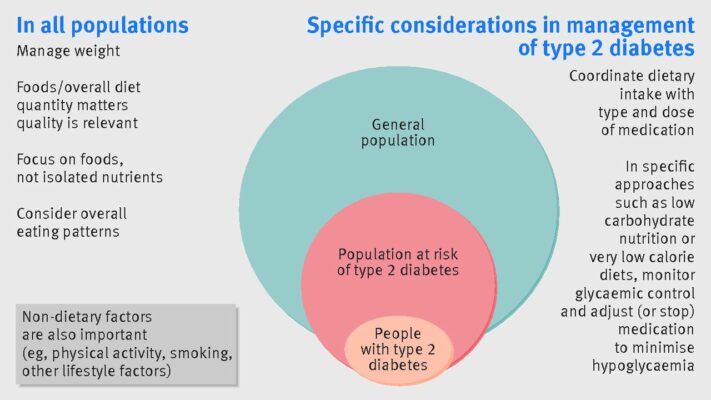
Learning to Self manage your Diabetes
- Keep a blood sugar log, tracking your blood sugars via the memory on your meter or through an app on your smart phone: Talk with your doctor about getting your own home blood glucose meter and learn how to operate your meter and track your blood sugar levels using your results to better manage your diabetes
- Learn to read labels, learning appropriate portion sizes, learning how different foods affect your blood sugar, and learning which foods are appropriate choices for diabetes, and which foods you should leave for a special occasion or treat: Get help with meal planning from a nutritionist if you need, and learn what you should eat and what to avoid.
- Plan an activity program: Learn how exercising effects blood sugar and insulin levels, and work with your diabetes care team to develop an exercise and activity program to meet your personal and healthcare needs
In addition, keep the following regular appointments for your diabetes care:
- Get a yearly eye exam.You will want to keep your vision healthy by having a yearly dilated eye exam, or retinal images. Furthermore, limited dexterity and poor eyesight may affect this age group’s ability to monitor their blood glucose levels and inject insulin; therefore a vision examination is important.
- Make sure your doctor checks your kidneys yearly. Your doctor should perform yearly urine and blood test to make sure that diabetes is not affecting your kidneys.
- A yearly flu and a pneumonia vaccine should be administered. People with diabetes should get flu vaccines yearly, and people with a diagnosis of diabetes can get a pneumonia vaccine before they turn age 65 (the usual age for the vaccine).
- Know your cholesterol numbers and keep track of them. Once a year or possibly every six months have your cholesterol checked. Know your levels and what to eat to increase intake foods with good fats, and decrease intake of bad fats. Meet with a dietician if you need advice.
- See a dentist every six months. People with diabetes get more periodontal disease( gum disease) . If you wear dentures, still go for your gums to be checked. Dental problems can limit many food choices for the elderly with diabetes.
- Every 3 to 6 months, depending on your doctor’s recommendations, have your average blood sugar, or A1C, measured. Talk with your doctor about your individual target for A1C and blood sugar levels.
- Take care of your skin. Apply an alcohol-free lotion, and report any non-healing cuts or bruises, or any unusual skin issues to your doctor or dermatologist.
- Check your feet EVERY, SINGLE, DAY. Report to your doctor if you have any problems with your feet, including any non-healing cuts or bruises. Use a good lotion, but not between the toes. Practice good foot care, and if you have thickened toenails, see a podiatrist to cut your toenails. If you cannot reach your feet, have someone else check them for you. There are also telescoping foot mirrors that can help you see the bottoms and sides of your feet. Do not use any corn, callous or wart removers on your feet, and cut your toenails straight across. Always buy good fitting shoes that do not pinch you. BE AWARE that good foot care is critically important for diabetics as a person can develop a blister one week and have an amputation the following week. Always check your feet daily if you have diabetes!!!
- Know your blood pressure numbers. Have your blood pressure checked often. Visit community screenings, or your local pharmacy, to get checks between visits to your doctor. May be think about buying your own home blood pressure monitor .
